Reviews
Philip Leacock
USA, 1973
Credits
Review by Thomas Scalzo
Posted on 04 October 2010
Source Warner Bros. DVD-R
Related articles
Made-for-TV
Don’t Be Afraid of the Dark
Categories 31 Days of Horror VII
An oft-overlooked cinematic category, the made-for-television fright film subgenre that flourished in the 1970s contains some wonderful examples of creative, subtly crafted horror. Though many of these pictures were shot in 35mm, they rarely had the budget, or extended shooting schedule, of a theatrical studio film. Additionally, the strictures placed on such films by the FCC compelled writers and directors of made-for-television horror to focus their energies on character and mood, rather than relying on visceral exploitation. These unique creative circumstances resulted in several films that warrant a second look. Each Monday this month we’ll explore a memorable offering from the golden age of the horror telefilm.
Inescapable oppression is writer Richard Matheson’s stock-in-trade. From the airplane-destroying gremlin in Nightmare at 20,000 Feet to the faceless truck driver in Duel, Matheson’s protagonists often find themselves hounded and driven to the brink of insanity by inscrutable enemies. A key factor to the success of Matheson’s scenarios is that his characters are regularly compelled to face these impossible evils alone, without anyone to assist them, and, more importantly, without anyone believing that anything is wrong in the first place.
Dying Room Only shows Matheson attempting to apply this effective formula to the tale of one woman’s ill-fated encounter with the denizens of the Arroyo Motel and Café. After enduring a long drive through the Arizona desert, and a heated argument with her husband Bob, Jean just wants to take a break from the road and have a bite to eat. But the air of disquietude hanging over the Café changes her mind. The lone employee is surly and standoffish, angrily smacking a lump of ground beef between his hands and ignoring calls for service. The only other customer is a beer-swilling redneck that doesn’t bother disguising either his lust for Jean or his antipathy toward outsiders. Informing Bob she’d like to leave as soon as possible, Jean heads to the bathroom. When she returns to her table, Bob is nowhere to be found.
This exceptionally simple set up is a study in how to create an atmosphere of tension and foreboding with little more than a desolate location and some well-placed closed-ups. From the scenic opening sequence of the couple driving through the desert, we know the Arroyo Café is in the middle of nowhere. The wide-angle establishing shots of the Arroyo itself substantiate the dusty desolation surrounding the place. And after a few shots of the cook’s menacing glower, or the redneck’s licentious eyes, we hope Jean and Bob forget lunch and get back on the road. Once Bob disappears, and we witness Jean stonewalled time and again as she inquires after her husband – first by the cook and the customer, and later by the woman running the Motel – the terror is palpable.
Despite this impressive beginning, I found myself slightly annoyed that Matheson chose to pacify the tension between Jean and Bob prior to their entering the café. Instead of allowing their argument to spill over into the Arroyo, we have a definitive reconciliation while the couple is still in the car. Why? Why bother establishing this conflict if not to use it? As it is, when the cook suggests that perhaps Bob ran off, Jean doesn’t believe it, and neither do we. Had Bob still been furious at Jean, it might have made sense. As it is, the cook’s mentioning of the possibility serves only to point the accusatory finger directly at himself. I admit it’s a minor point, but our knowing definitively that Bob is still somewhere in the vicinity detracts from the intensity of Jean’s torment. Had Bob deliberately abandoned her to this oppressive fate, her isolation would be all the more complete, and thus all the more terrifying.
A more questionable narrative decision comes in the characterization of the local police officer. For starters, instead of the overweight layabout that often makes an appearance in horror films, the lawman here is an effective, impartial, and dedicated authority figure. Called to the scene by a frantic Jean, the officer is genuinely concerned, though at first he can’t make much sense of her fantastic story. Nevertheless, he agrees to have a look around, and to do some checking with the boys back at the station. And even if nothing turns up, he promises to stop back at the Arroyo later in the evening.
Again, the question that arises is: why? Why make this character kindly and helpful? Why make him antagonistic with the Arroyo populace? Why make it explicitly clear that he will be coming back to check on Jean? Left to her own devices, Jean’s hunt for Bob would likely have resulted in her inexorable decent into an abyss of frustration and fear. As it is, we know the cop is coming back and that the rules of law and order are still a part of this world. Though the man doesn’t necessarily believe her story, and regardless of what may happen to Bob, this knowledge makes Jean’s plight less frightening.
In any event, despite these narrative decisions, Jean’s ongoing investigation of the Arroyo grounds remains undeniably exciting, each clue she uncovers serving to deepen our understanding of the nefariousness afoot. For instance, it develops that the bathroom of the café has a back door; a door that the cook claims hasn’t been opened in some time. In addition, as she discreetly scampers about the shadowy Arroyo grounds, Jean discovers that connected to the back of the café is a ramshackle barn, full of rusty bits of machinery, moldy house wares, and a bare light bulb that turns on and off for no discernable reason. And try as she might to glean some information from Vi, the churlish Motel clerk, all Jean can figure is that no one at the Arroyo wants her sticking her nose where it doesn’t belong. Could it be that Bob’s disappearance is no mere accident, but part of a complicated and well-established kidnapping scheme?
Though the film does eventually answer the question, and provide a serviceable explanation as to the goings on at the Arroyo, the resolution of the mystery itself ultimately proves less interesting than Jean’s tortuous attempts to extricate herself from this untenable situation. Which is why it seems so strange that Matheson went to so much trouble to provide us with a logical explanation to the ordeal. Why not craft a Duel-like tale, in which there is simply no reason for the ceaseless torment? Why worry about a tidy ending? Thankfully, Cloris Leachman’s strong performance as Jean is enough to overcome such befuddling narrative decisions, offering us a heroine at once terrified and alone, yet resilient and resolute—a woman capable of both solving the mystery and enduring inexplicable torment. Though the film could have easily been a potent psychological thriller, Leachman’s performance ensures that at the very least, we’re treated to an effective made-for-television tale of suspense.
More 31 Days of Horror VII
-

The Thin Blue Line
1988 -

The Ninth Configuration
1980 -
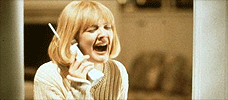
Scream
1996 -
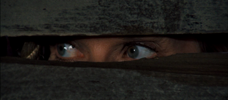
Dying Room Only
1973 -

Brain Dead
1990 -

Zombi 2
1979 -
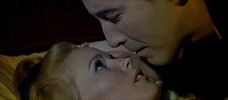
Dracula Has Risen from the Grave
1968 -

The Storyteller
1988-1989 -
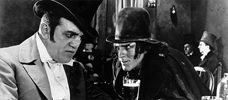
Dr. Jekyll and Mr. Hyde
1920 -

I Know What You Did Last Summer
1997 -

Don’t Be Afraid of the Dark
1973 -

Dark Age
1987 -
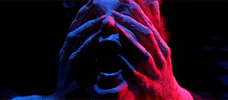
Inferno
1980 -
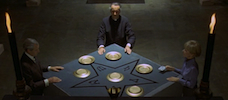
To the Devil a Daughter
UK / West Germany -
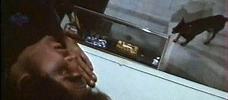
Trapped
1973 -
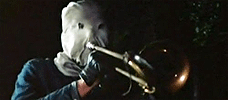
The Town that Dreaded Sundown
1976 -

Halloween H20: Twenty Years Later
1998 -

Killdozer
1973 -

Pin
1989 -
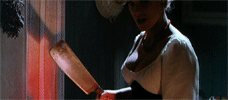
Frankenstein Created Woman
1967 -
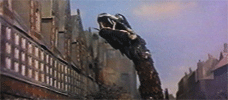
Reptilicus
1961 -
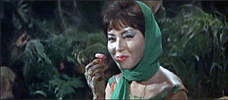
Matango
1963 -

I Still Know What You Did Last Summer
1998 -
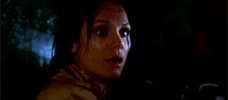
Night Terror
1977 -
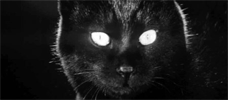
Kuroneko
1968 -

Demons
1985 -
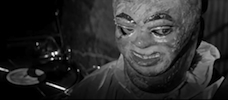
Paranoiac
1963 -
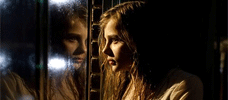
Let Me In
2010 -

The Phantom of the Opera
1925
We don’t do comments anymore, but you may contact us here or find us on Twitter or Facebook.



